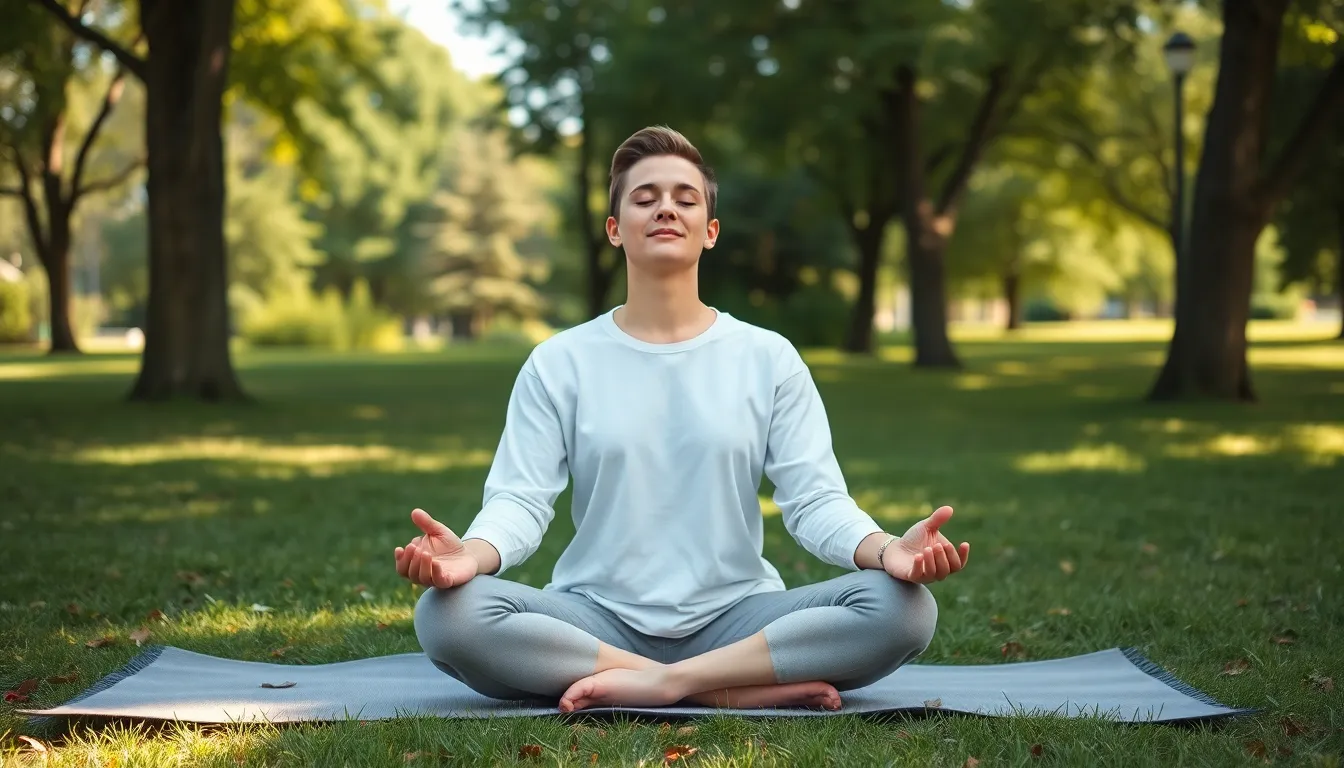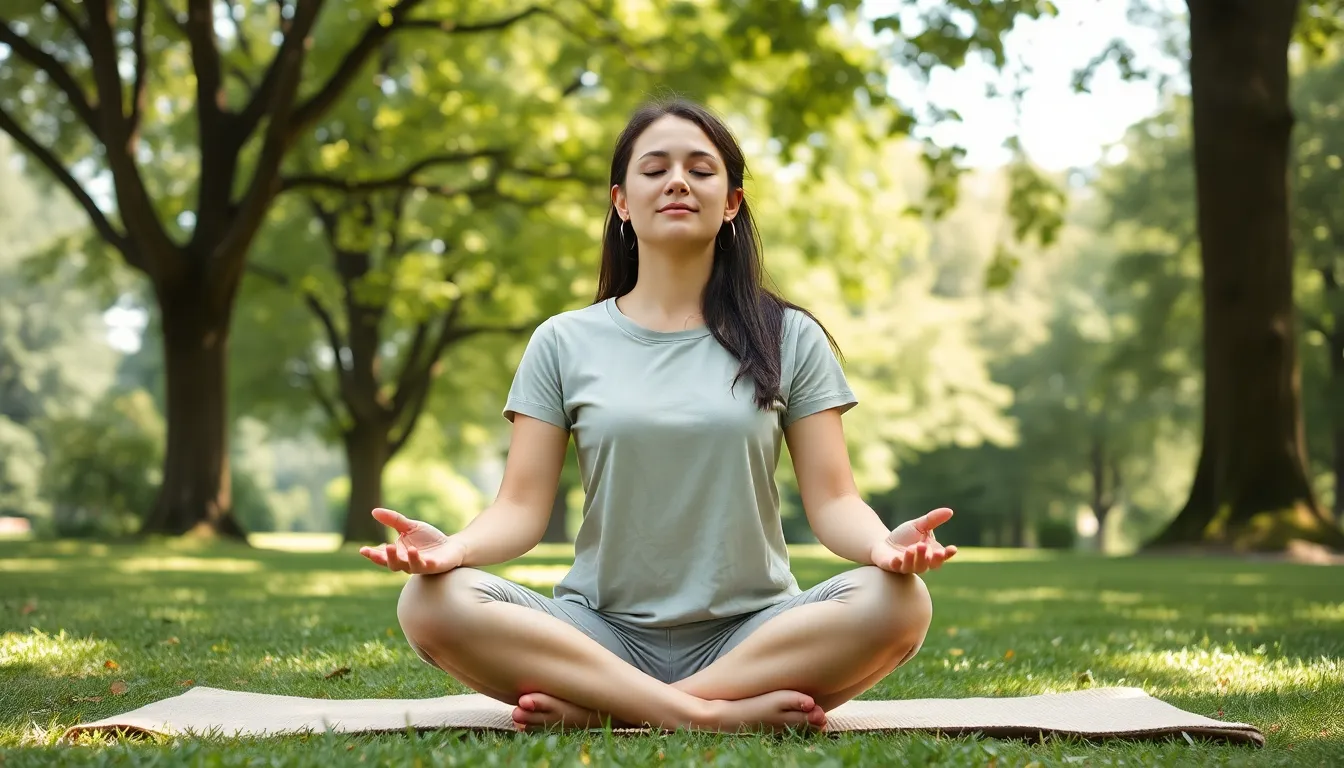Table of Contents
ToggleIn a world buzzing with distractions, finding a moment of peace can feel like searching for a needle in a haystack. Mindfulness exercises offer a refreshing escape from the chaos, allowing individuals to reconnect with the present moment. It’s like hitting the pause button on life’s fast-forward button—without the risk of missing out on cat videos.
Imagine taking a break from the daily grind to focus on your breath or simply notice the world around you. These exercises don’t require a yoga mat or a mountain retreat, just a willingness to embrace the now. Whether it’s a quick five-minute practice or a deep dive into meditation, mindfulness can transform everyday moments into opportunities for clarity and calm. So grab a comfy seat and get ready to explore how these simple techniques can bring a little zen into even the busiest of days.
What Are Mindfulness Exercises?
Mindfulness exercises encompass techniques aimed at promoting awareness of the present moment. These practices enable individuals to focus on thoughts, feelings, and sensations without judgment. Several categories exist, including breathing exercises, body scans, and guided imagery.
Breathing exercises often involve counting breaths or noticing the sensations of the air flowing in and out. Body scans encourage attention to different parts of the body, fostering a deeper connection with physical sensations. Guided imagery allows individuals to visualize peaceful settings, which can enhance relaxation and clarity.
Daily routines can seamlessly integrate mindfulness exercises. For instance, short sessions of just five minutes can significantly impact stress levels. Engaging in these practices in various environments enhances accessibility.
Research indicates that regular mindfulness practice leads to improved mental well-being. Participants in mindfulness programs report decreased anxiety and increased emotional regulation. Examples of resources include mindfulness apps and online guided sessions that provide structure for beginners.
Incorporating mindfulness into daily life does not require extensive time commitments. Even brief moments of mindfulness, such as focusing on a single task, can create a sense of calm. Individuals can explore these exercises to determine which types resonate most effectively with them.
Types of Mindfulness Exercises

Mindfulness exercises fall into various categories, catering to different preferences and lifestyles. These approaches include formal and informal practices, each offering unique benefits.
Formal Practices
Formal practices involve structured mindfulness activities designed for focused awareness. Examples include guided meditations, body scans, and mindfulness-based stress reduction (MBSR) programs. Guided meditations often use audio recordings or apps, helping individuals engage deeply with their thoughts and feelings. Body scans encourage participants to mentally check in with different body parts, promoting relaxation and heightened awareness. MBSR programs typically span eight weeks, combining meditation, yoga, and group discussions to foster a thorough understanding of mindfulness concepts. Regular engagement with these structured techniques can lead to enhanced emotional regulation and decreased stress levels.
Informal Practices
Informal practices integrate mindfulness into everyday activities, promoting awareness throughout daily routines. Examples include mindful eating, mindful walking, and deep breathing exercises. Mindful eating encourages individuals to savor each bite, focusing on flavors and textures, which enhances the overall experience of meals. Mindful walking transforms each step into a moment of awareness, connecting individuals with their surroundings. Deep breathing exercises can be practiced at any time, offering quick relief from stress and anxiety. By incorporating these techniques into daily life, individuals cultivate a continuous state of mindfulness, leading to improved mental well-being.
Benefits of Mindfulness Exercises
Mindfulness exercises provide numerous benefits to individuals striving for balance in their lives. Regular practice not only enhances mental clarity but also improves overall well-being.
Mental Health Improvements
Mindfulness exercises significantly boost mental health. Individuals practicing these techniques often experience reduced anxiety and depression. Studies show that even short sessions lead to a noticeable decrease in stress levels. Emotional regulation improves, making it easier for individuals to manage their responses to challenging situations. Enhanced focus and concentration result from consistent practice, providing clarity in thoughts. Many users report feeling more grounded and connected, fostering a deeper sense of self-awareness.
Physical Health Benefits
Physical health benefits arise from engaging in mindfulness exercises. Regular practice contributes to lower blood pressure, reducing the risk of heart disease. Additionally, mindfulness alters pain perception, leading to decreased physical discomfort. Research indicates that these exercises can improve sleep quality, enhancing overall health. Even individuals with chronic health conditions note significant improvements in their symptoms. Integrating mindfulness into daily routines promotes healthier choices, supporting a more balanced lifestyle.
How to Integrate Mindfulness Exercises into Daily Life
Integrating mindfulness exercises into daily life fosters a greater sense of peace and presence. Start by dedicating just five minutes each day to a short meditation. Engaging in focused breathing can diminish stress quickly. Practicing mindful eating during meals encourages awareness of food textures and flavors.
Incorporate mindfulness into daily activities such as taking walks. Paying attention to the surroundings transforms an ordinary stroll into a calming experience. Attaching mindfulness exercises to routine habits reinforces their presence in life. For example, practicing deep breathing while waiting in line creates moments of peace amidst busyness.
Utilizing mindfulness apps enhances the practice by offering guided sessions. These resources provide structured support, allowing users to explore different methods. Attending weekly mindfulness classes can also deepen understanding and commitment. Teachers often share valuable insights to enhance individual practice.
Setting reminders to pause throughout the day encourages intentional mindfulness moments. It’s easy to take a deep breath or perform a body scan during short breaks at work. Developing a mindfulness journal aids in reflecting on daily experiences, thoughts, and feelings. Writing enhances awareness and cultivates emotional regulation.
Lastly, connecting with others can promote a supportive environment for mindfulness practice. Sharing experiences with friends or family increases motivation and accountability. Ultimately, integrating these exercises enriches life by enhancing well-being and resilience.
Tips for Practicing Mindfulness Effectively
To practice mindfulness effectively, consistency plays a crucial role. Start each day with a five-minute meditation to set a calm tone. Engaging in deep breathing exercises can quickly diminish stress in various situations, such as waiting in line or during a busy workday.
Integrating mindfulness into daily life allows for greater awareness. Attaching mindfulness practices to routine activities, like eating or walking, transforms those moments into opportunities for reflection. Practicing mindful eating encourages individuals to savor each bite, promoting both enjoyment and awareness.
Establishing a mindfulness journal enhances self-awareness and emotional regulation. Writing down thoughts and feelings fosters a deeper understanding of emotional patterns. Sharing experiences in a group or with friends can create a supportive environment, which helps reinforce mindfulness habits.
Utilizing mindfulness apps offers structured guidance for beginners. Many apps provide daily reminders or guided sessions, making mindfulness accessible throughout the day. Attending weekly mindfulness classes further supports growth and understanding, allowing individuals to learn from experienced practitioners.
Remaining open to different techniques ensures a personalized approach to mindfulness. Exploring various exercises, like body scans or guided imagery, helps individuals find what resonates most. Incorporating mindfulness moments into everyday life enriches overall well-being and builds resilience amidst challenges.
Mindfulness exercises offer a practical way to cultivate awareness and tranquility in a fast-paced world. By incorporating these techniques into daily routines individuals can experience profound benefits for their mental and emotional well-being. Whether through structured practices or informal moments of mindfulness it’s essential to find what works best for each person.
The journey towards mindfulness is personal and evolving. Consistency is key to reaping the rewards. As individuals explore various exercises they’ll likely discover newfound clarity and resilience. Embracing mindfulness not only enhances daily life but also fosters a deeper connection with oneself and the present moment. Through these simple yet powerful practices anyone can navigate life’s challenges with greater ease and grace.




